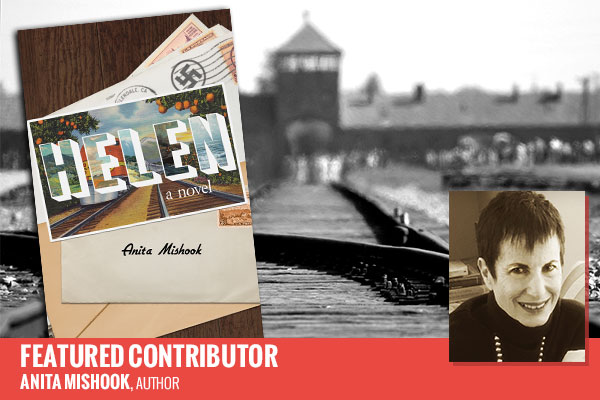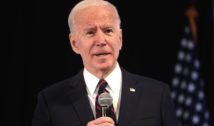
Concern About Trump’s Presidency Echo Fears from Woeful 1930s
- By Anita Mishook --
- 31 Jan 2017 --

The eery similarities between 1930s America and today.
As Americans of the Islamic faith raise their concerns about the new President’s intentions towards them, as those who struggle economically voice their distress over illegal immigrants, as the new government of the United States seems to turn its attention inward, fearful of refugees petitioning for entrance, themes from the weary and woeful 1930s loom large. The Great Depression and the rise of Nazis in Europe impacted Jews severely in similar ways.
Concern About Trump’s Presidency Echo Fears from Woeful 1930s[/tweetthis]
The depression of the 1930s hurled 13 million people into unemployment, fully 25 percent of the country’s work force. For those who did work, wages plunged 40 percent. And the drought in the Midwest created the Dust Bowl, blowing dirt as far as New York City. Families trying to relocate to California to work on farms found themselves turned away by “the bum blockade” of Los Angeles sheriffs who patrolled highways and railroad stations. No matter that this was a violation of civil rights.
World War I’s devastation and the restrictions imposed on Germany as the culprit had thrown that country into a dismal decline. Leftists of all persuasions fought with the far right over the way to ease the country’s pain. Hitler came fully to power in Germany in early 1933. Laws restricting the rights of Jews took force. Kicked out of schools, professions, forced to identify their shops as Jewish-owned, restricted from parks, cinemas, beaches, sports, the Jewish citizens of Germany tried to flee.
“Tried to flee.” But, the United States Immigration Act of 1924 purposely and severely restricted immigration of Southern and Eastern European residents, read by many as specifically targeting Catholics and Jews. (It also banned outright immigration of Arabs and Asians to “preserve the ideal of American homogeneity.”) By the mid-1930s when German aggression against neighboring countries increased the likelihood of war again in Europe, U.S. government officials went to great lengths to bar an increase in Jewish refugees despite the desperate nature of their plight.
Some have argued that the refusal to allow Jews to immigrate was not anti-Semitic in nature, but due to concerns about the economy. And, that officials recognized Jews were being religiously persecuted but did not think they would be slaughtered as a result. Persecution of Jews was, after all, a time-honored tradition in Europe and not, therefore, an issue the United States should interfere in. But anti-Semitism was a tradition in the U.S. State Department as well.
Even top-seated Jewish German, Hungarian, and Polish scientists and artists found a wary greeting in the United States. An organization devoted to placing scientists at major U.S. universities found Caltech under its founder, Robert Millikan, for example, reluctant to accept more than one or two of the many fleeing. Stanford was similarly resistant. When Hollywood opened its doors to directors and actors, the pro-Nazi groups scattered leaflets accusing the studio heads of firing good American citizens in favor of refugees.
In the meantime, Jews in the United States were uncertain what to do to help their co-religionists. On the one hand, protesters marched against Germany and then against the United States’ participation in the Olympics, held in Berlin in 1936. On the other hand, responsible Jewish leaders advocated for quiet pressure on government leaders to do something so that attention to this Jewish cause would be limited. And, those Jewish leaders looked for non-Jewish supporters to be “out in front” on the issue.
Government concern grew about the pro-Nazi movement in the United States. That was a double-edged sword, though, for Jews hoping to enter. What if the Nazis planted agents among the refugees, agents who would then engage in subversive activities such as spying or terrorism? The Anti-Defamation League put its own spies into the German-American Bund and the Silver Shirts, which were ardent supporters of Hitler. The FBI, under J. Edgar Hoover, investigated these groups also. The House of Representative’s Special Committee on Un-American Activities gathered all that information together. By the end of World War II, the government imprisoned or repatriated to Europe pro-Nazi individuals.
In 1939, the St. Louis sailed from Europe with over 900 Jewish asylum-seekers aboard. The captain petitioned the United States to allow the passengers to disembark, but the government refused. Cordell Hull, then Secretary of State, insisted the ship return to Europe, which it did, discharging its cargo back into the maw of the Holocaust.
Senators Wagner and Rogers introduced a bill in 1939 to allow 20,000 German refugee children to enter the United States. Of course, the children would be predominantly Jewish. While the bill had strong support, the Daughters of the American Revolution and the American Legion, among other groups, opposed it. They argued that “charity begins at home,” and that children should not be separated from parents. The bill died, as did the children.
At the same time, one-fourth of the population expressed “concerns” about Jews. Anti-Semitic actions, like vandalizing Jewish cemeteries, rose in the early years of World War II.
“Those who cannot remember the past are doomed to repeat it,” George Santayana said.[/tweetit] The United States is recovering, slowly, from the Great Recession. Job loss and decreased wages cause a sharpened concern for illegal immigrants. The United States looks at turmoil and terrorism abroad with understandable concern for more terrorist acts here. But, the focus then falls on citizens of the Islamic faith, who are scrutinized, attacked, and asked, in turn, to report on their own. And, the United States acts to restrict to the point of non-existence any new immigration from Muslim countries despite the flood of desperate refugees.
In her historical novel, Helen, Anita Mishook explores the pro-Nazi threat and activities of the German-American Bund and Silver Shirts in the United States, and the spy activities of the Anti-Defamation League. Helen is available through Amazon, Barnes and Noble, and other booksellers.
Resources
- Helen
- History -The Great Depression
- Pew Research Center
- Office of the Historian
- Forbes
- Nobel Prize
- Jewish Virtual Library
- United States Holocaust Memorial Museum
- Wikipedia




















